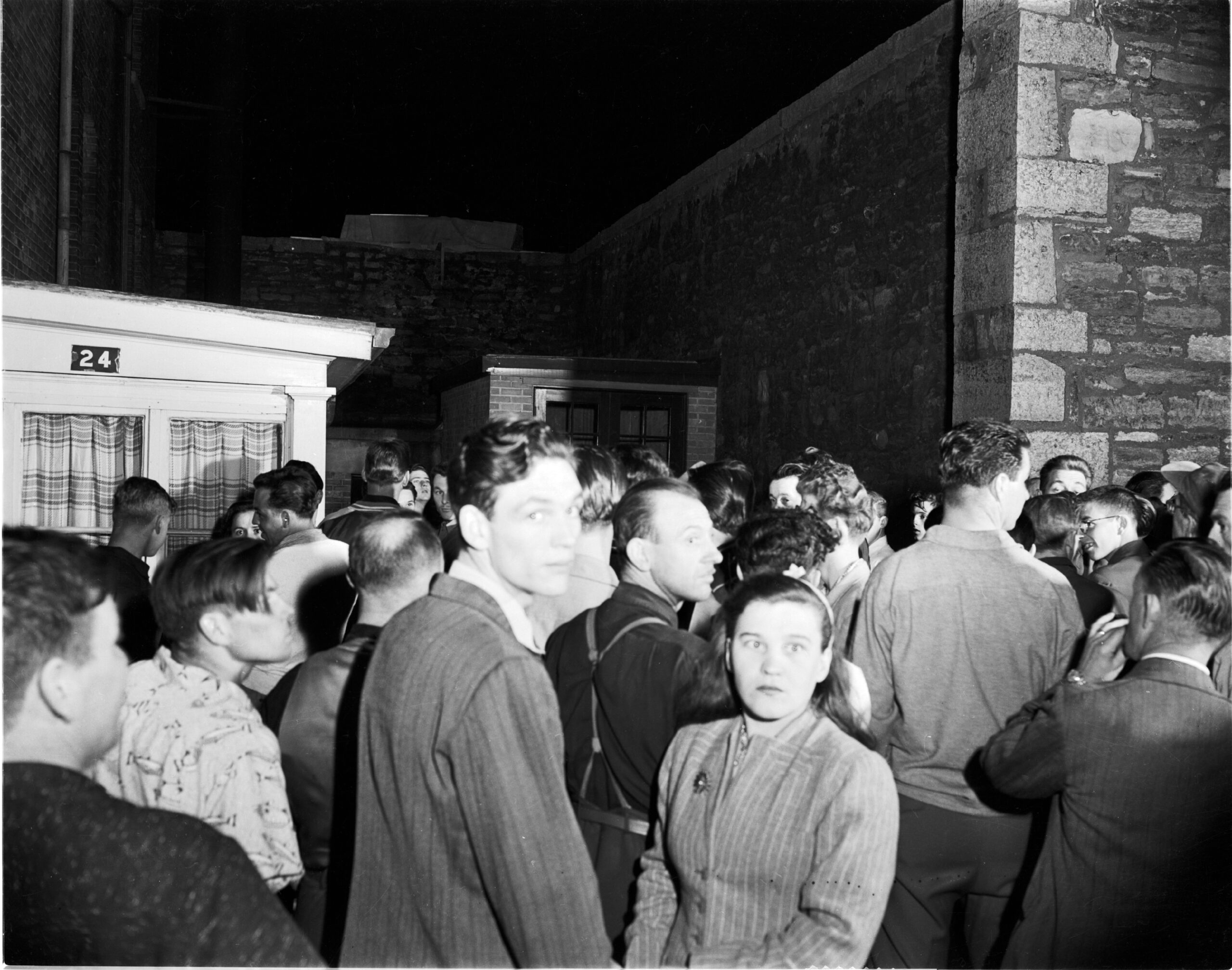The Tragic Cornwall Tour
Cornwall like any 200 year old plus town has many secrets and has been the site of often long forgotten sorrow. This month I am going to show you where some of these tragedies took place. While you could walk to every site, you might prefer driving as it is over 6.5 kms long.
1.The single greatest loss of life in Cornwall and SD & G took place in 1847 when 52 out of 234 Irish immigrants, fleeing the Potato Family came to Canada to start a new life, died from disease in the quarantine “fever” shed erected on Pointe Maligne. Claiming both Catholic and Protestant victims, of all ages, the Celtic Cross in Lamoureux Park adjacent to the Museum marks the tragedy.
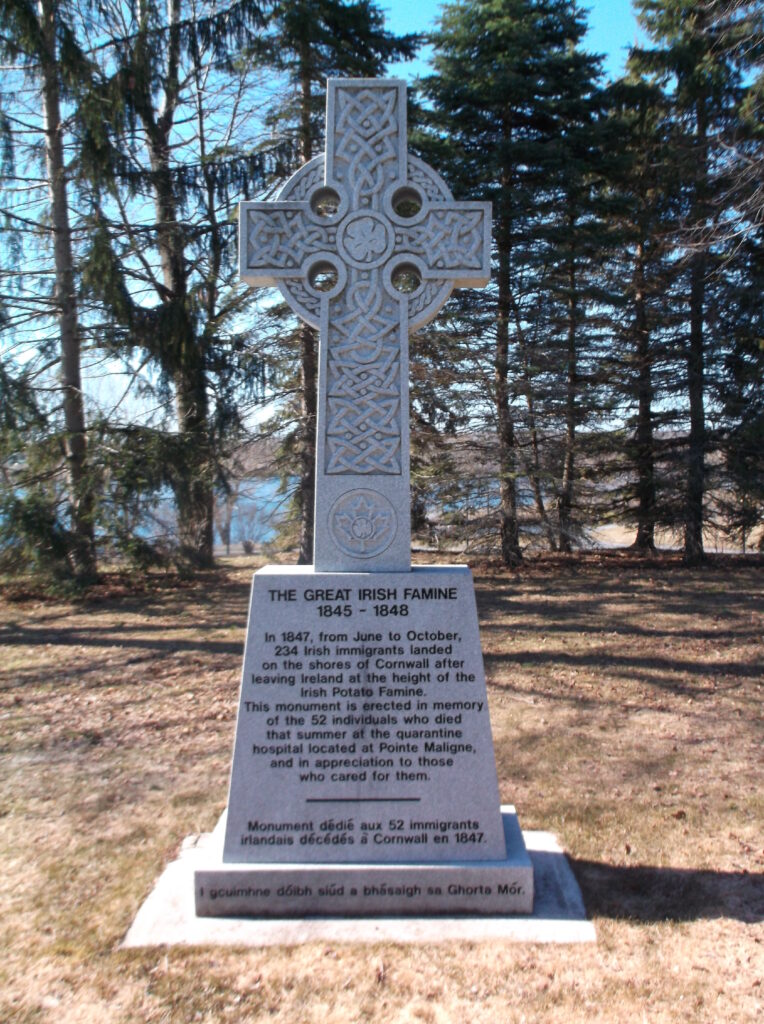
Photo: This Celtic Cross in Lamoureux Park was dedicated by the Cornwall Irish Committee on Oct. 10, 2014. The Committee is proud of the fact that no government funds were used to build this monument meaning it was wholly paid for through public subscription.
2. Did you know that when you drive down the east side of Sydney Street between 5th and 6th that you might be travelling over long forgotten graves? From 1831 to 1889 St. John’s Presbyterian Church used the now empty lot on the east side of Sydney as its cemetery. Found abandoned and “unkempt” in 1927, when millionaire William R. Haggart visited the old cemetery to see his father’s grave, the deplorable conditions led him to approach St. John’s to refurbish the grounds. As a result, in 1932 a monument faced by 67 of the best preserved stones, that housed those in broken condition on the inside, was constructed, while the bodies largely remained in the ground. With the widening of Sydney Street in 1967, more tombstones were found. County Registrar Dr. J.A. Phillips said that there could still be bodies there. By 2017 the monument had deteriorated to the point that the Church decided to demolish the monument to public anguish.

Photo: The composite monument built in 1932, with many of the historic gravestones from St. John’s Presbyterian Church’s cemetery. Demolished in 2017. (Photo courtesy,“Standard-Freeholder.)
When you cruise down Sydney, think of the 1865 inscription on Mrs. Nichola Wylie’s stone:
“A tender wife and mother dear: a faithful friend lies buried here. In love she lived. In fear she died. Her life was asked but God denied.”
3. Gallows’ Hill. Before the construction of the Cornwall Jail, public hangings were held on lot 3, north of 5th St. (5th St. E., east side of Gloucester.) In 1821, four men were found guilty of murder and condemned to death. Many years later, a young Jacob Pringle remembered hearing the sounds of wagon loads of people going to witness the spectacle. One of the guilty, defiant to the end, kicked his boots off when he reached the scaffold proclaiming “that he was making a damned liar of his mother,” who said he would die with his boots on!”
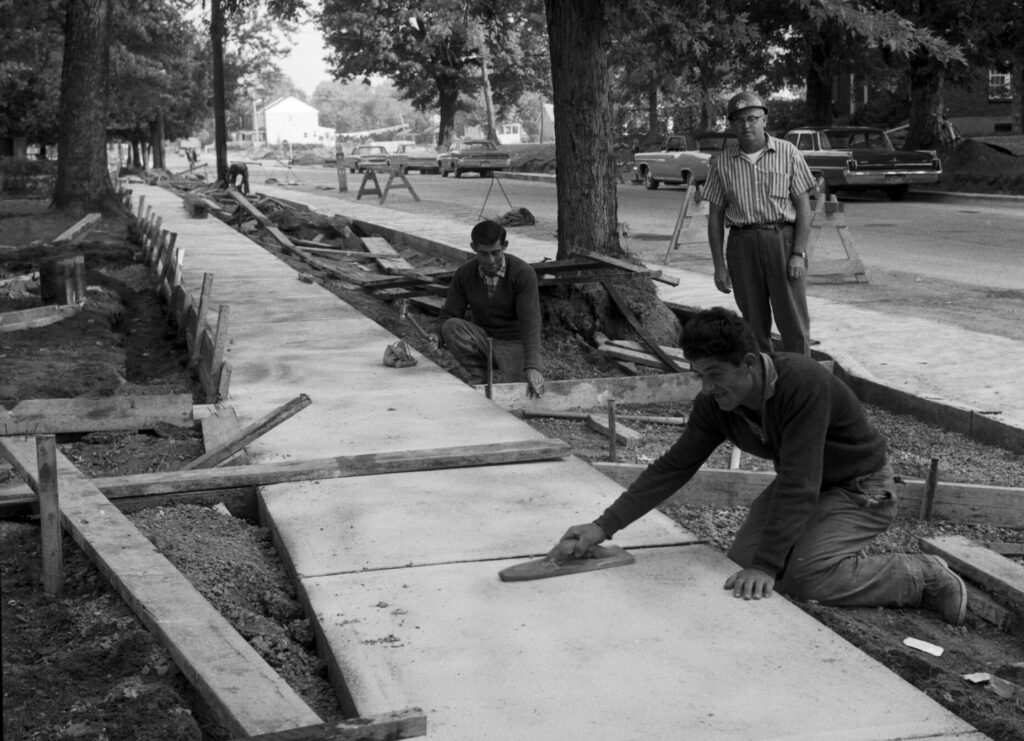
PHOTO: When the section of Sydney adjacent to the cemetery was widened and a sidewalk installed tombstones were found.There is every possibility that old graves are still to be found under the street. (Photo Courtesy,“Standard-Freeholder.)
4. On the afternoon of Sept. 6, 1892, usually calm Pitt St. was shattered by gunshots followed by an angry mob. When the dust settled, Special Constable John Robert Davey, had been shot to death by brig and James Slavin. With numerous witnesses attesting to the murder, the jury took 10 minutes to deliver a guilty verdict. The 25 year old Slavin was hung on Dec. 16. Davey, the only member of the Cornwall Police Services to be killed on duty, is now remembered by a plaque on Constable John Robert Davey Memorial Way.
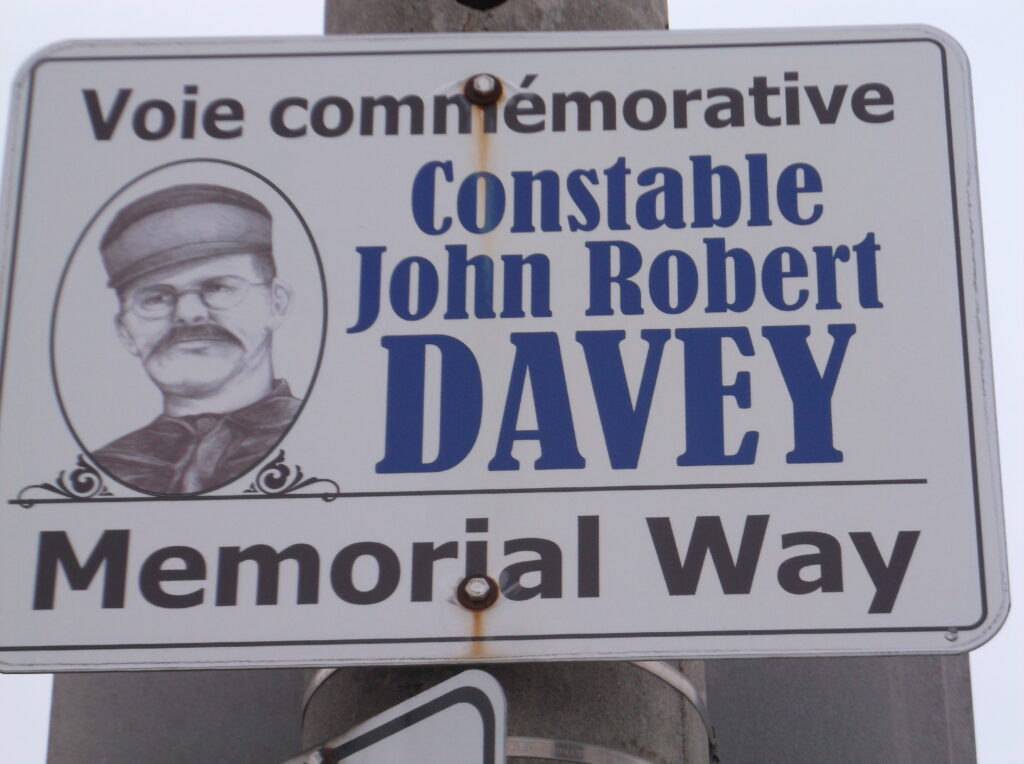
PHOTO: Constable Davey’s memorial plaque on Constable John Robert Davey Memorial Way, near where he died, on 9th St. E., between Pitt and Sydney Sts.
5. Fifteen men, nearing the completion of the southern (American) span of the New York and Ottawa Railway bridge died when Pier 2, collapsed, September 6, 1898.
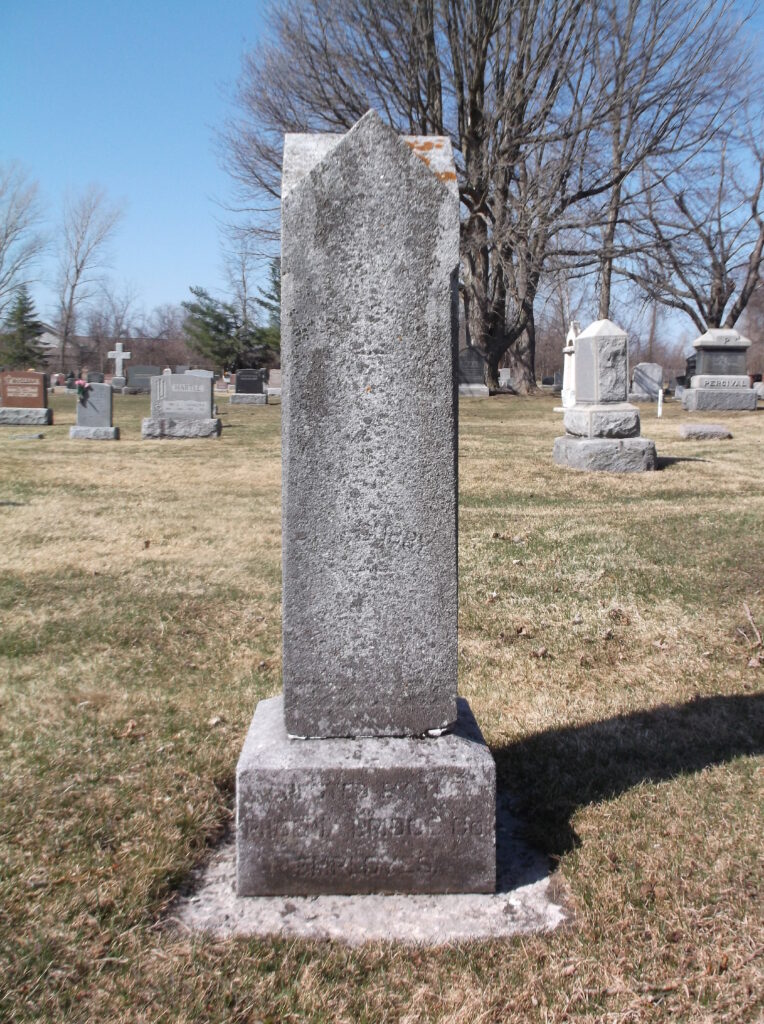
PHOTO: The tombstone for four of the of the 15 men killed in the September 6th, 1898 bridge collapse, in Woodlawn Cemetery, in section 85, just left of the Ross/Empey stone. The eleven other victims were buried in St. Columban’s Cemetery. With the names all but obliterated you can just see the letters “…ubby” for W.J. Cubby and read the comment on the stone’s base which I believe reads:“Dedicated by the Phoenix Bridge Co. Employees.”The only letter I could read on the back of the stone was “s” for either Wm. Saunders or Wm. Sherman. Ramond Dysart’s name has been completely eroded.
6. As part of the war time effort, lethal mustard gas was made on a 308.5 acre site, on the west side of Wallrich St., just north of Queen, by Stormont Chemicals in 1943. Three years later 2,800 tonnes of unused gas was left sitting outside in metal containers, waiting to be moved. Even though the site may have been contamination three years before, the Department of National Defence didn’t declare 540 Wallrich St. safe until 2007!
7. Haley’s Comet caused the superstitious to worry about impending tragedy. These fears were confirmed locally when the “fireproof” Rossmore House on Pitt St. (now the site of the Arts Centre) was destroyed by fire claiming 12 lives, on April 29, 1909 during the Comet’s weeks long trajectory past earth.
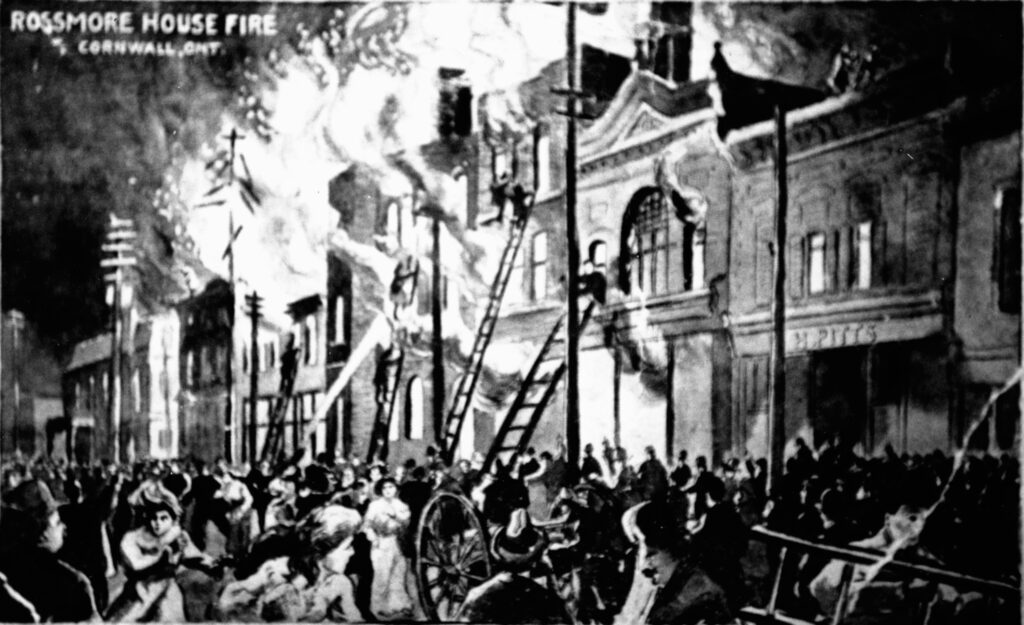
PHOTO: A dramatic postcard rendition of the Rossmore House fire.
8. The historic Cornwall Jail is without doubt the most macabre place in Cornwall. Once doing double duty as a jail and “insane” asylum, the jail saw five hangings and uncounted suicides. Complete with a dungeon many claim it is haunted. Peter Balcombe was the last person executed here, May 25th, 1954. In anticipation of his death, a “morbid mob,” waited outside of the jail’s walls bordering Pitt St. to hear the swoosh of the gallows’ trapdoor. Convicted murderer Henri Seguin cheated the hangman when he committed suicide with a dose of cyanide smuggled into the jail shortly before his scheduled execution January 19, 1954.
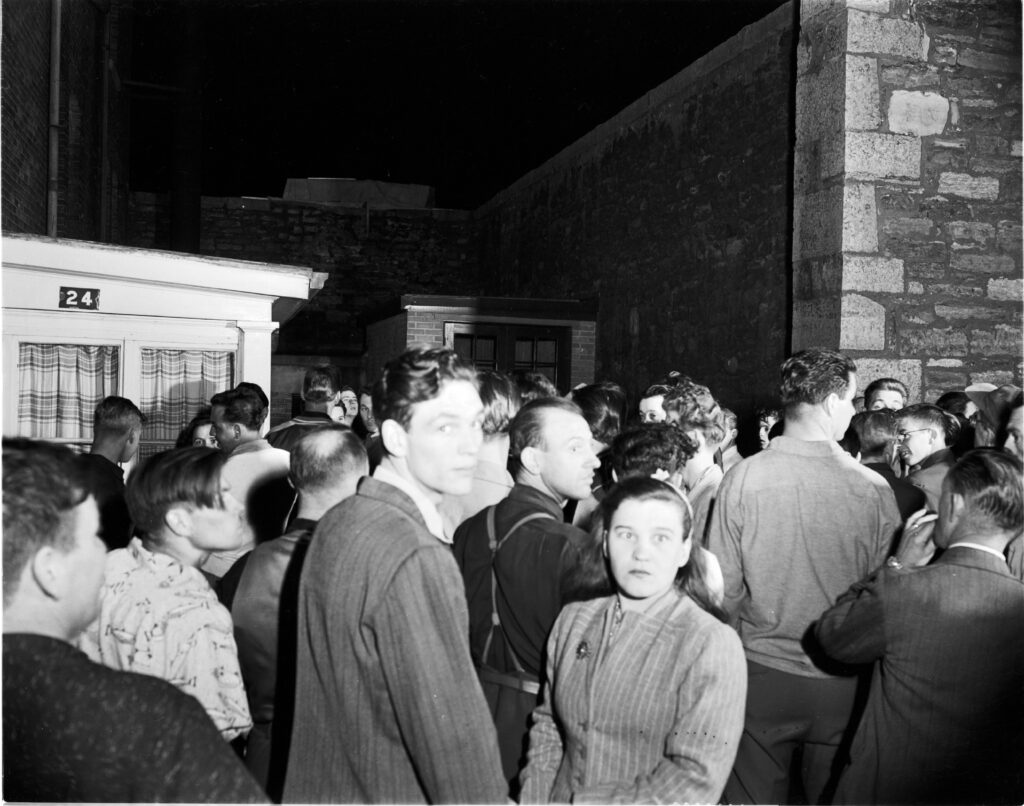
PHOTO: This disturbing image taken by veteran “Standard-Freeholder,” Marcel Quenneville depicts the “Morbid Mob,” excitedly waiting to hear the scaffold drop outside of the Cornwall Jail’s walls announcing the death of convicted murderer Peter Balcombe.
9. Parking lot or graveyard? No one can tell you how many inmates died while in custody in the Cornwall Jail, or exactly where they are buried, but it is fairly certain that the bodies of unclaimed inmates are under the parking lot on the west side the of historic Cornwall Jail at 11 St. W., Water St.
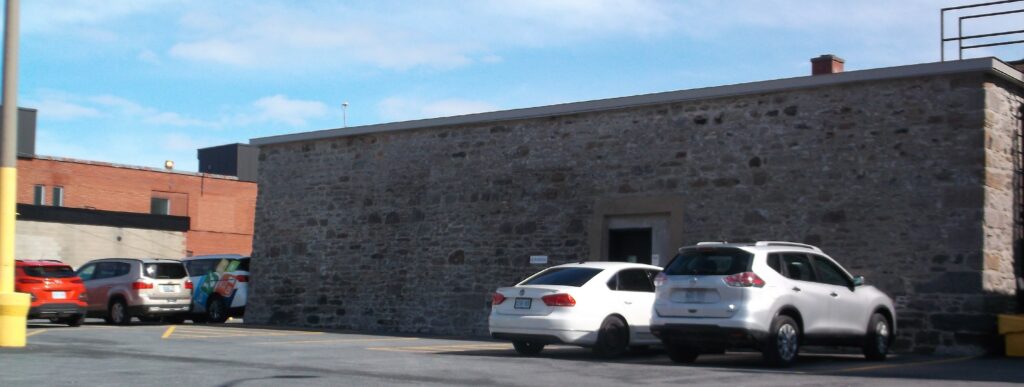
PHOTO: Parking lot or graveyard?



